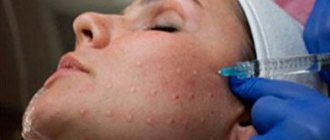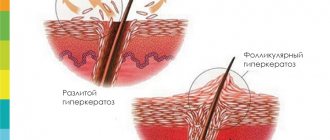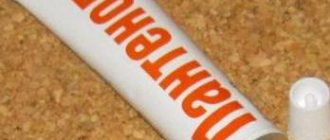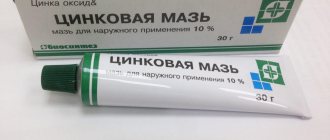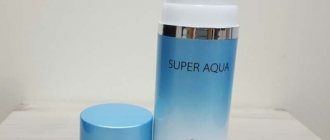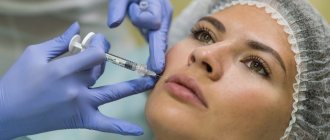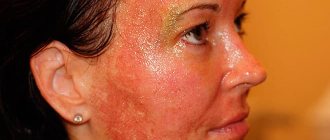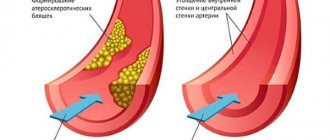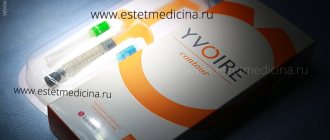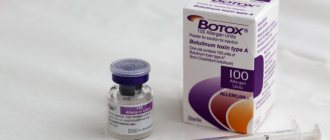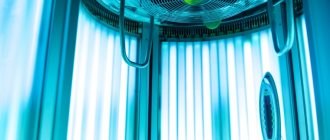Mechanism of action of azelaic acid
Back in the 70s, studies were conducted that proved that azelaic acid can fight hyperpigmentation.
Later, scientists found out that AK also has an anti-comedinal effect, and they began to include it in acne treatment courses.
AA competitively inhibits some enzymes that reduce oxygen, for example, thioredoxireductase, oxidoreductase, tyrosinase, etc. In addition, azelaic acid slows down the activity of the anaerobic glycolysis enzyme hexokinase, 5-reductase.
Azelaic acid is able to neutralize free radical forms of oxygen and slows down the process of their production by neutrophils, which indicates its antioxidant effect.
Without affecting the growth of normal cells, AA is an inhibitor of DNA synthesis and has a suppressive effect on the activity of mitochondria in tumor cells. Azelaic acid exhibits antibacterial activity against anaerobes and aerobes.
The possibility of its inclusion in anti-acne therapy is due to the fact that AA has anti-inflammatory, antibacterial, antiproliferative effects and affects many parts of the pathogenesis of acne. Resistance does not develop to azelaic acid.
AZELAIC ACID, SULFUR AND ZINC - A TRIPLE IMPACT FOR ACNE
Bottles with a red stripe and the inscription AZELAIC present the most effective products in the Seracin LIBREDERM line. They contain a complex of three components, which completely helps against acne.
Azelaine has pronounced anti-inflammatory and antimicrobial properties, normalizes sebum production, which has an anti-acne and depigmenting effect on the dermis and epidermis.
Also, as in the rest of the Seratsin LIBREDERM , there are specially developed components based on natural sulfur and zinc salts. They have sebum-regulating, antibacterial and local anti-inflammatory functions.
No less important are the additional components in the line:
- burdock extract and gulavnik extract - sebum-regulating and antibacterial effect, - finger lime extract - cleansing and antioxidant effect, - BIOLIN prebiotic - supports the natural microflora of the skin.
After using cosmetics with such a composition of components, acne has no chance of survival. Seracin LIBREDERM collection of products acts on the skin like a life-giving elixir, transforming it from sick and irritated to healthy and smooth. Always be well-groomed and beautiful!
What is the difference between 15% gel and 20% cream?
The ability of topical preparations with azelaic acid to penetrate the epidermis and dermis is largely related to the properties of the base.
First, 20% azelaic acid cream was invented. Later it became possible to create a gel, which is a more effective way of delivering the active substance, this made it possible to reduce the concentration of azelaic acid to 15%. Studies have shown that the penetration of 15% gel is 25.3%, and 20% cream is 3.4%16.
TREATMENT AND CARE STRATEGY FOR PROBLEM SKIN
Proper cosmetic care for acne-prone skin has its own laws and consists of several necessary stages. Special care cosmetics should:
- relieve inflammation, - restore the skin barrier, - regulate sebum production, - effectively and long-lastingly moisturize the skin, - protect from ultraviolet radiation, - fight pathogenic bacteria, - help the beneficial skin microbiome.
The good news is that the products from the Seratsin LIBREDERM collection cover all these needs and are excellent for acne. It is important to learn how to use them correctly. For example, in the morning you need to first cleanse your face with a cleansing gel, apply a mattifying serum in the afternoon that fits well on top of cosmetics, and in the evening treat it with a night cream that normalizes the functions of the dermis during sleep. You can choose other items from the line, but the stages of care should take place in this order.
Acne treatment using Azelik® gel
Azelik® gel contains azelaic acid as the main active ingredient. The base also contains an emollient - a softening and moisturizing component5. Azelik® has the following effects5:
- normalizes keratinization processes in the sebaceous glands;
- reduces the amount of free fatty acids on the skin;
- has an antibacterial effect, helping to reduce the colonization of Propionibacterium acnes and Staphylococcus epidermidis;
- has an anti-inflammatory effect by reducing the metabolism of neutrophil granulocytes and the free oxygen radicals they produce.
According to the instructions, Azelik® should be used twice a day, morning and evening. First you need to wash your face and wipe your skin dry. The first results from using the gel can usually be noticed after about 4 weeks5.
ISSUES
Hormones stimulate increased production of sebum in the hair follicles, which clogs the opening of the hair from the follicle to the outside and inside the dermis, where it is located, severe inflammation occurs. A familiar bubble and redness forms on the surface of the skin. Usually with age, when hormonal changes end, this problem disappears. However, people with increased sensitivity to androgens in the blood have to live with it all their lives. In any case, whether it is a temporary problem or a permanent one, you should study the issue and learn how to properly deal with acne.
In our turbulent days, in addition to long-known skin problems, another new product for 2022 has appeared - maskne . Maskne is acne that forms where tissue rubs against the skin. During a pandemic, people have to wear medical masks for the safety of themselves and others. This helps protect against the virus, but at the same time provokes increased activity of the sweat and sebaceous glands in the places on the skin that the mask covers. As a result, rashes, irritation and redness appear on the face, called maskne .
Modern medicine and cosmetology successfully treat all types of dermatoses. It is important to learn how to control these ailments and apply the right therapy to the face and body. As a rule, successful treatment of skin problems is complex, consisting of drug therapy and specially designed cosmetics.
Side effect
Side effects are rare, but with very high sensitivity, redness, itching and discomfort in the area of application may occur. The skin may also peel and become dry. On the part of the nervous system, paresthesia may occur, that is, a feeling of goosebumps on the skin.
side effects of azelaic acid
The skin and subcutaneous tissue can have the following side effects: cheilitis, depigmentation, acne, acne and more. Azelaic acid effect on facial skin
special sensitivity causes unpleasant side effects.
Immune system: hypersensitivity reaction, aggravation of bronchial asthma, as well as other allergic reactions.
If you take a closer look at azelaic acid, its properties
she has useful ones; it can eliminate many skin diseases. If you suddenly encounter rashes on your face, make an appointment with our endocrinologist.
What is azelaine peeling?!
Azelaine peeling is a subtype of superficial chemical peeling for gently cleansing the skin and resolving some dermatological problems. The main component of the composition is natural azelaic (nonandioic, 1.7-heptane dicarboxylic) acid, which belongs to the group of dibasic saturated carbon compounds and is obtained by oxidative ozonation of oleic or linoleic acids, and is also found in wheat and barley. The substance normalizes metabolic processes and restores the cellular structure of the skin.
Antimicrobial action18
According to research, azelaic acid has bacteriostatic and bactericidal activity against a large number of microorganisms, including S. epidermidis, P. acnes, S. aureus, P. granulosum, S. capitis, etc. Bacteria do not develop resistance to AK. In order for azelaic acid to exhibit its antibacterial properties, it must be used for at least 1 month.
The antimicrobial effect of AA is associated with the ability to change the pH level inside bacterial cells. Azelaic acid penetrates into the bacterial cell due to transmembrane ionophore proteins. The lower the pH, the better the absorption of AA by Propionibacterium acnes. Disruption of the transmembrane pH gradient negatively affects bacterial metabolism.
Advantages of azelaine peeling
- Versatility - carried out for any phototype.
- All-season - does not increase skin sensitivity to sunlight.
- Highly effective with repeated use - no pathogenic microorganisms resistant to peeling.
- Atraumatic and delicate impact.
- Availability and ease of use.
- Activity and safety.
- Short recovery period.
- Well tolerated - azelaic acid is a natural substance for the body.
Minuses
- Course methodology.
- There is a risk of side effects.
- Low effectiveness for severe and progressive skin defects.
Types of azelaine peeling
By the nature of the impact.
- Classic - exfoliation of the top layer of skin for a superficial effect.
- “Dry” - dehydration of the outer layer of the epidermis with subsequent removal of peeling in the form of a film for a median effect.
According to the form.
- Gel - for uniform and external distribution of components in tissues.
- Aqueous-alcoholic - for deeper skin effects.
Multi-acid all-season gel with azeloic acid is presented in the MESOMATRIX OILY BALANCE non-invasive carboxytherapy system.
Stages of azelaine peeling
- Consultation and examination - collecting anamnesis, identifying contraindications, designating a treatment regimen.
- Preparation - use of moisturizing creams with 5-10% AHA acids to adapt and smooth the skin 10-14 days before the start of the course.
- Sensitivity test - applying an exfoliant to the crook of the elbow for 30 minutes to detect allergic manifestations.
- Cleansing before peeling - removing impurities using milk or foam with natural moisturizing ingredients.
- Degreasing - rubbing with lotion with 3% glycolic acid to enhance penetration of ingredients.
- Protect mucous membranes, lips, and corners of the eyes with special preparations containing petroleum jelly or silicone polymers to prevent acid from entering vulnerable areas.
- Peeling - treatment of the skin with 15-30% azelaic acid with pH 1.8-3.0 in 1-3 layers by massaging for 5-10 minutes from the periphery to the center: forehead, temples, cheeks, chin, eyelids, nose, nasolabial triangle. The exposure time and number of layers may vary depending on the type of preparation.
- Removing the composition with cool water.
- Applying soothing agents - licorice extract, retinol, vitamin E and sunscreen.
